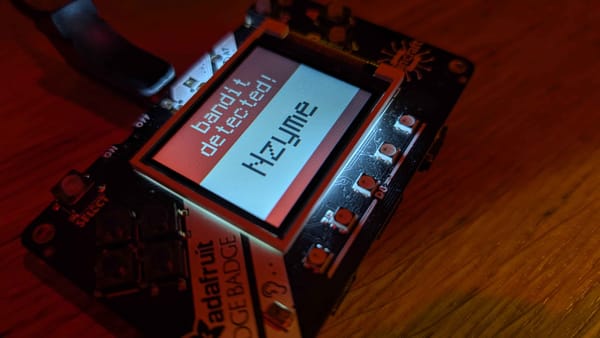From Group Policy to Zero Trust - Intune Grows Up

One of the biggest gaps in enterprise defence has always been consistent, automated endpoint security, and if you've ever wrestled with Group Policy or tried to keep hybrid devices compliant you'll appreciate just how far Microsoft Intune has come.
Last week Microsoft published a new dedicated page detailing guidance taking it a step further, showing how to configure serious defensive firepower directly through Intune.
I'm really pleased to see the steady levelling up of Microsoft Intune for device management. For years, IT departments have clung to their on-prem domain controllers and Group Policy Objects like comfort blankets, convinced there was no practical way to achieve the same level of control in the new world of cloud-first identity and device management.
But that gap has been closing fast. Intune has evolved from a fairly basic MDM platform into something far more capable and deeply integrated.
In this latest move, Microsoft has released (preview!) guidance for configuring a set of baseline security recommendations for endpoints using Intune (and not just for Windows devices either).
https://learn.microsoft.com/en-us/intune/intune-service/protect/zero-trust-configure-security
The guidance ties together some big, foundational themes: Zero Trust, least privilege and segmentation, strong credential and authentication hygiene, and automated configuration enforcement to keep everything in line.
In this post, I'll walk through a few of these recommendations and the defensive improvements they bring. They're listed in a subjective, risk-weighted order (or "bang for your buck," depending on how caffeinated you're feeling).
Phishing-Resistant MFA and Device Compliance
ATT&CK Tactics Mitigated:
- TA0001 Initial Access : Phishing (T1566.002)
- TA0006 Credential Access : Valid Accounts (T1078), Brute Force (T1110), MFA Interception (T1556.006)
- TA0008 Lateral Movement : Use of Authentication Tokens (T1550.002)
- TA0003 Persistence : Create Account (T1136)
The number one initial access vector is still phishing and the use of legitimate (but compromised) credentials. MFA greatly reduces this risk, and phishing-resistant MFA can almost eliminate it.
We're talking about FIDO2 keys (like YubiKey https://amzn.eu/d/ddEVtlG) and Windows Hello for Business. Even simple number matching helps cut down on MFA fatigue and phishing success rates.
Couple this with Device Compliance and you can ensure that only compliant, managed devices can authenticate - even if the attacker somehow has valid credentials. Make sure your policy enforces "managed by organisation" status, and you'll lock out a huge chunk of opportunistic attackers.
Attack Surface Reduction and Defender AV Baselines
ATT&CK Tactics Mitigated:
- TA0002 Execution : Command and Scripting Interpreter (T1059), User Execution (T1204), Signed Binary Proxy Execution (T1218)
- TA0003 Persistence : WMI Event Subscription (T1047)
- TA0004 Privilege Escalation : Exploitation for Privilege Escalation (T1068)
- TA0005 Defence Evasion : Obfuscated Files or Information (T1027)
- TA0040 Impact : Data Encrypted for Impact (T1486)
Deploying Attack Surface Reduction (ASR) rules through Intune blocks risky behaviours that often precede infection and compromise, things like macro execution, script abuse, and suspicious child process creation.
Microsoft Defender baselines make sure your antivirus configuration stays consistent across every asset, enforcing real-time protection, scheduled scans, sane exclusion policies, and definition updates. It's basic security hygiene, but it dramatically reduces the risk of malware execution and ensures your protections stay current.
Updates for Windows, MacOS, iOS/iPadOS
ATT&CK Tactics Mitigated:
- TA0002 Execution : Exploitation for Client Execution (T1203)
- TA0004 Privilege Escalation : Exploitation for Privilege Escalation (T1068)
- TA0008 Lateral Movement : Exploitation of Remote Services (T1210)
- TA0005 Defence Evasion : Exploitation for Defence Evasion (T1211)
We all know that keeping operating systems up to date fixes bugs and adds features, but more importantly it closes the door on vulnerabilities that attackers exploit every day.
Using Intune to enforce timely patches across Windows, macOS, and iOS/iPadOS helps reduce exposure to known vulnerabilities. Many breaches start with an unpatched endpoint; enforcing critical updates quickly narrows the attacker's window of opportunity and strengthens your defence in depth.
LAPS and Local Account Minimisation
ATT&CK Tactics Mitigated:
- TA0004 Privilege Escalation : Exploitation of Valid Accounts (T1078.003)
- TA0008 Lateral Movement : Remote Services (SMB/RDP) (T1021.002)
- TA0003 Persistence : Create or Modify System Process (T1543)
LAPS is such an obvious mitigation for static, shared passwords that it's almost criminal not to use it. Intune can now enforce Windows LAPS v2, ensuring every device has a unique, regularly rotated local admin password securely stored in Entra for admins to retrieve when needed.
Shared local admin credentials are a goldmine for malware and ransomware operators. Compromise one machine and you've potentially compromised them all. LAPS breaks that chain: unique passwords per host block lateral movement and can even generate useful alerts (lots of failed admin logins? Yikes!).
BitLocker / FileVault Everywhere
ATT&CK Tactics Mitigated:
- TA0006 Credential Access : Unsecured Credentials (T1552)
- TA0009 Collection : Data from Local System (T1005)
- TA0010 Exfiltration : Exfiltration of Data at Rest (T1020)
- TA0040 Impact : Data Destruction or Theft (T1485/T1537)
Full-disk encryption isn't glamorous, but it's vital. BitLocker (Windows) and FileVault (iOS) protect against data exposure if a device (or its storage) is stolen. Without encryption an attacker can simply remove the drive, attach it to another machine, and read your files.
With encryption enforced, that becomes almost impossible for most attackers. Intune can enforce use of TPM, secure boot, and automatic key backup to Entra, ensuring strong recovery and compliance at scale.
Scoped-Tagged RBAC
ATT&CK Tactics Mitigated:
- TA0008 Lateral Movement : Remote Services (T1021), Windows Remote Management (T1021.006)
- TA0011 Command and Control : Application Layer Protocol (T1071), Encrypted Channel (T1573)
- TA0010 Exfiltration : Exfiltration Over C2 Channel (T1041)
- TA0007 Discovery : Network Service Scanning (T1046)
For larger organisations, Intune scope tags combined with RBAC (Role-Based Access Control) can dramatically reduce the blast radius of an admin compromise. By restricting each admin's visibility and access to only their department or business unit, you contain potential damage.
Segmenting the management plane like this limits the impact of a compromised account preventing a bad day from becoming an organisational crisis.
Get these foundational 6 configurations in place and you're going to make life much harder for attackers, but remember that security is never done! There are plenty more recommendations in Microsoft's post, and it’s absolutely worth reading the whole thing if you're responsible for Entra or Intune and care about hardening your environment.
Security shouldn't be an afterthought. If you're mid-migration from the old world to the new, make these controls your top priority, even if that means pausing other projects. Move fast, fix fast, and get your foundations right.
It might just save you from the kind of heartbreak that comes with an avoidable incident.
Read Microsoft's full guidance on configuring Intune for increased security!



